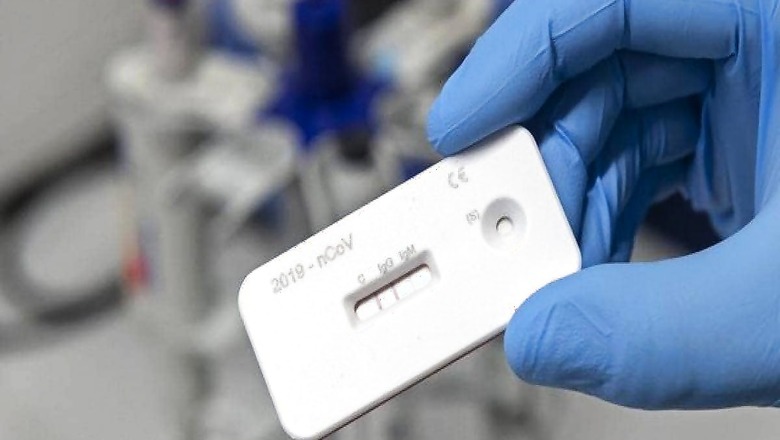
views
Five months after it was developed by two scientists at the Institute of Genomics and Integrative Biology (IGIB), the Feluda CRISPR test to detect the presence of Coronavirus has received a nod from the Drug Controller General of India for a commercial launch.
The Tata Group, which has signed an agreement with Council of Scientific and Industrial Research (CSIR), will soon launch the test kit, which is touted to be faster than the Real-Time Reverse Transcription – Polymerase Chain Reaction test (rRT-PCR). The rRT-PCR test is considered as the gold standard for detecting SARS-CoV-2.
News18 explains how the Feluda-CRISPR test works and how it is different than the rRT-PCR test.
What is the new Feluda test developed by CSIR-IGIB?
The test uses the CRISPR (Clustered Regularly Interspaced Short Palindromic Repeats) technology which has been hailed as a cutting-edge technology used for detection of genomic sequences and gene editing. According to the Ministry of Science and Technology, it adapts the Cas9 protein to detect the Coronavirus during the test. The entire process of the test takes lesser time compared to the rRT-PCR test and also requires less expensive and skilled manpower. The test kit has been developed by IGIB scientists Souvik Maiti, senior principal scientist and Debojyoti Chakaraborty, senior scientist.
How does the Feluda test work?
The testing process is completed roughly in four steps. Viral RNA is extracted from the nasal and throat swab samples collected from a suspected patient. The viral RNA is converted into DNA using the reverse transcriptase method using a PCR (polymerase chain reaction) machine, which also amplifies the DNA multiple times, making several copies.
According to Debjoyi Chakaraborty, the Feluda mix is prepared, containing the Cas9 protein, which can bind to the DNA of the virus. Chemicals are added to the CRISPR complex and to the DNA during amplification process to generate a colorimetric reaction on the paper strip.
In the last step, the paper strip or dipstick is immersed in the Feluda mix. The paper strip generates the test result in the form of two lines for a positive and one line in the case of a negative test, akin to a home pregnancy test. However, this is a nucleic acid test and not a protein based test.
How is the Feluda test different than the rRT-PCR test?
The Feluda-CRISPR test does not require the machinery required for a real-time reverse transcription polymerase chain reaction and the skilled manpower required to use it. Standard PCR machines can be used for the CRISPR test and it is more readily available in labs. “We detect the signal using the CRISPR complex which is highly specific. It figures out if the viral signature is the SARS-CoV-2 signature, and then binds to it and the read out is in the form of a paper strip, in the form of a band. It takes lesser time than the rRT-PC,” said Chakaraborty.
Will it be used in field settings by governments and what is the kit’s cost?
According to Chakaraborty, Tata Group is handling the industrial and commercial operations of the kit and the commercial availability of the kit will be announced soon along with its final market price. However, given the less complicated process followed to use the kit, it is likely that the kit will be used in field settings soon.
As per the Ministry of Science and Technology, the test kit had a 96% sensitivity and 98% specificity to detect the SARS-CoV-2 virus. Sensitivity relates to the rate at which it can correctly detect positive cases (true positive rate) and specificity is the rate at which it can correctly detect negative cases (true negative rate).


















Comments
0 comment